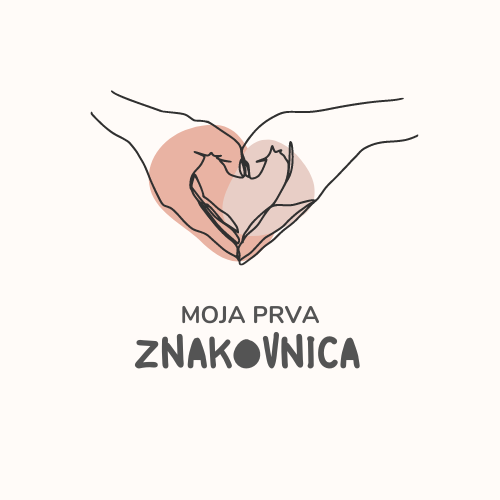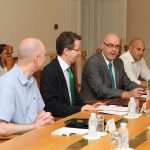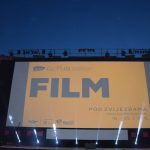December the 21st, 2023 – Moja Prva Znakovnica is the first video dictionary of Sign Language that is primarily intended for hearing parents of deaf children, as well as for everyone who wants to learn Croatian Sign Language.
In this interview prepared by Zoran Rajn, we’ll bring you more information about the project and the launched crowdfunding campaign for its realisation in an interview with Dorijana Kavčić, member of the Board of Directors of the Croatian Association of Sign Language Translators.
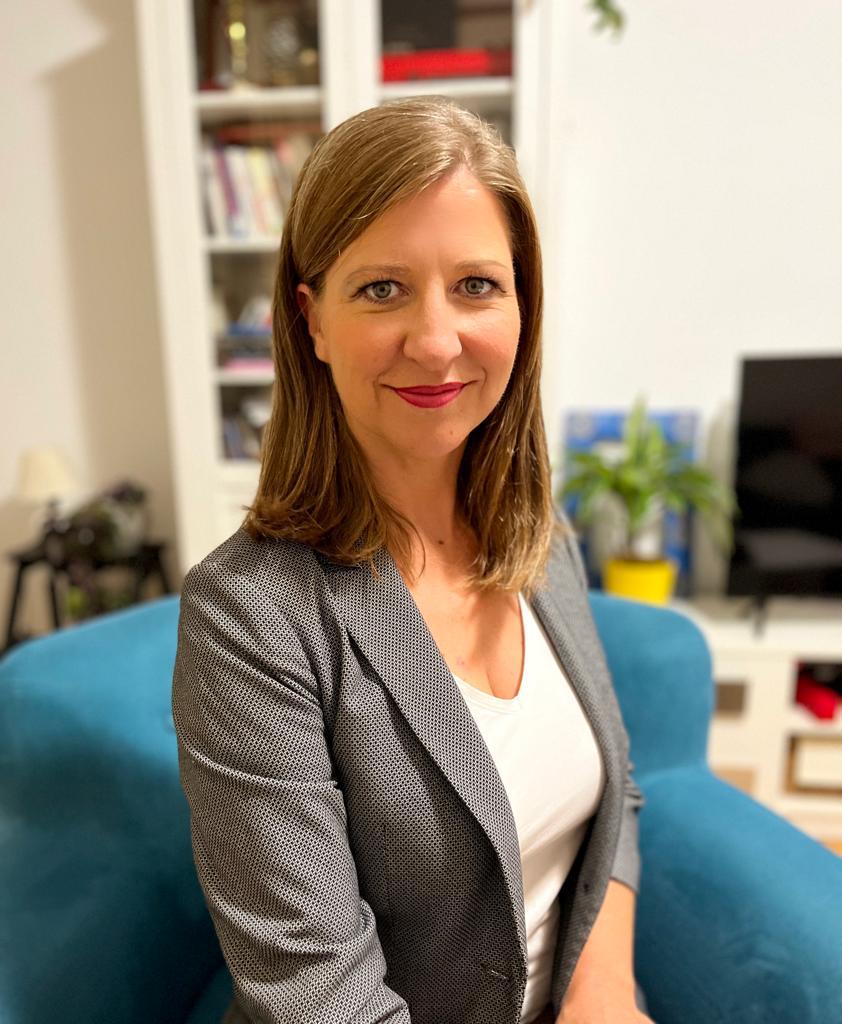
please introduce yourself to the readers and share information from your rich biography
I am a PhD student of Linguistics at the Faculty of Philosophy and Social Sciences, and I am also working as an external associate there and at the Faculty of Philosophy and Kinesiology. I teach courses on Croatian Sign Language. Raised in the Deaf community, I naturally gravitated towards a career as a Croatian Sign Language interpreter, a profession I’ve been dedicated to for 12 years. I have continually enhanced my skills through various international seminars and training sessions. Since 2018, I’ve been designing and conducting workshops for fellow professionals. Since 2014, I’ve worked as an external collaborator for Croatian Radio and Television, translating informative content, including Dnevnik, News, parliamentary broadcasts, election confrontations, and children’s content on HRT’s Ju-hu-hu platform.
As a member of the Board of Directors of the Croatian Association of Sign Language Interpreters, I contribute to the creation and implementation of strategic plans. These plans encompass the education of interpreters, the publication of Bulletin, and the development of educational materials. Additionally, I founded the Commission for testing knowledge of Croatian Sign Language according to CEFR (Common European Framework of Reference for Languages), facilitating the testing of knowledge across levels from A0 to C2.
In my efforts to advance the profession’s development, I actively engage in activities within EFSLI, the European Forum of Sign Language Interpreters. This involvement includes organizing conferences and designing project collaborations.
My primary motivation lies in equalizing opportunities for Deaf and hearing individuals, particularly concerning their right to access their first language. This commitment has led to my latest project, Moja Prva Znakovnica, a crowdfunding campaign aimed at collecting funds for the creation of the first real, accessible, and free digital dictionary of Croatian Sign Language.
You’re a member of the Board of Directors of the Croatian Association of Sign Language Interpreters for the Deaf. When was the Association founded, and what are its goals and activities?
The Croatian Association of Sign Language Interpreters was established in 2016 with a specific focus on organizing professional support and educational activities for current and future interpreters of Croatian Sign Language. While our initial goal was narrow, over time, we evolved into a prominent resource for knowledge about Croatian Sign Language and Deaf culture.
Our journey began by recognizing the absence of educational materials and acknowledging that time was of the essence. Consequently, we initiated activities aimed at professionalizing the field of sign language interpreting and advocating for the rights of the Deaf to their own language. Our members, who are exclusively afforded opportunities to enhance their knowledge and skills, thereby become translators and interpreters of high standard and quality, directly impacting the quality of life for our Deaf community.
Simultaneously, we are committed to raising public awareness about the significance of sign language and the rich culture of the Deaf community. Emphasizing innovation, we launched a crowdfunding campaign for the creation of the first Croatian Sign Language dictionary, Moja Prva Znakovnica. Interestingly, there is currently no comprehensive dictionary for sign language, and while there are some video materials on platforms like YouTube, our dictionary aims to be a true linguistic resource. Users will be able to input a term in Croatian and receive a video featuring the corresponding sign, along with instructions on its execution and related expressions and sentences in which the sign is utilized.
Furthermore, we are actively exploring opportunities within the Erasmus+ programs, seeking international collaboration with associations of similar nature as well as those involved in artistic activities. Our goal is to forge direct connections between language and culture, fostering a broader understanding and appreciation for sign language globally.
What inspired you to initiate the “Moja Prva Znakovnica” project, and how did you identify the need for a Croatian Sign Language dictionary?
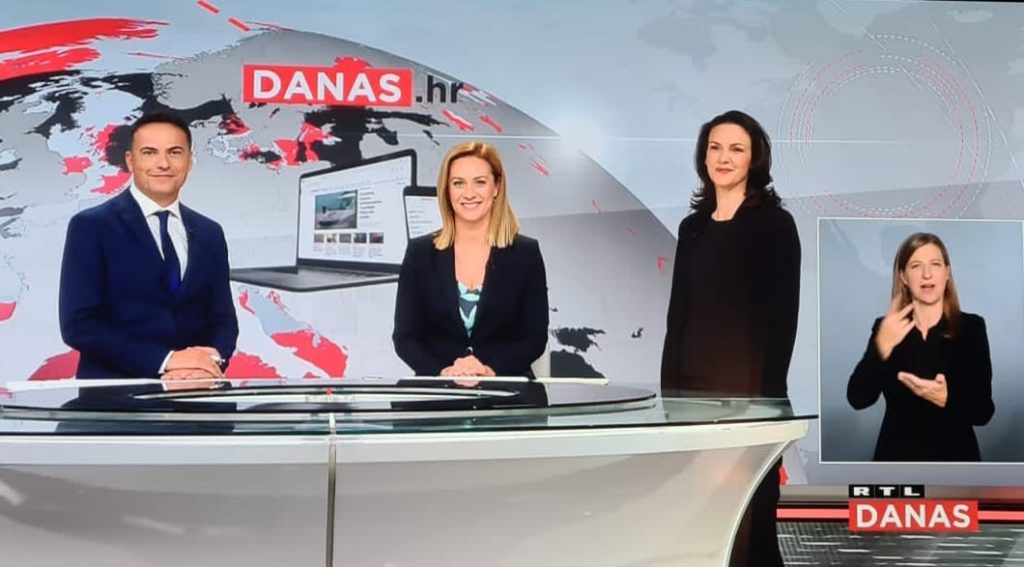
Growing up within the Deaf community, I have embraced the role of an ambassador for Deaf language and culture throughout my life. It became evident early on that there is a profound lack of awareness surrounding the Deaf community as a vibrant linguistic and cultural minority. The information available is scarce, making it challenging for those not directly involved to appreciate the richness of the language and the diversity within their culture. Typically, insights can be gained only through deaf associations and the courses they organize.
Unfortunately, public discussions about Deaf individuals often frame them solely within the context of disability, overlooking their significant contributions to society. They possess unique knowledge, skills, and a distinctive sense of humour that enrich our collective experience. A notable example is a recent episode of the show “Knjazalište,” where the lives and cultural nuances of the Deaf were portrayed with openness and empathy. The focus was not on the challenges they face but on the potential they embody and fulfil. Indeed, Deaf individuals can excel in various areas, with their only limitation being their inability to hear. This is the perspective we aim to highlight and promote.
Returning to the genesis of the Moja Prva Znakovnica dictionary, its necessity and inspiration stem from the realization that there is a significant lack of knowledge about Croatian Sign Language. While courses are available in a few deaf and hard-of-hearing associations, they often cover only the basics due to limited materials and professional staff. Furthermore, these courses are primarily accessible in larger cities, leaving a gap for those in smaller cities and towns, where Deaf and hard-of-hearing individuals reside and require interpreter services.
In response, we leverage digital technology and the internet as invaluable sources of knowledge. The vision for Moja Prva Znakovnica is to serve as an ever-accessible and free educational resource, accessible through an online platform. Our aim is to bridge the educational gap and ensure that individuals, regardless of their location, can access comprehensive materials to learn and appreciate Croatian Sign Language.
What successes and positive outcomes do you anticipate for the deaf community and individuals who will have access to this resource?
Foremost, this campaign serves as a catalyst for increased visibility of the Deaf community and their language. By making our message public, we aim to secure media coverage that sheds light on the challenges faced by the Deaf, their untapped potential in contributing to society, and the crucial theme of inclusion. The broader goal involves the creation and accessibility of educational materials and informative content. It’s essential to raise awareness that spoken language remains inaccessible for individuals who are deaf and hard of hearing. Despite advancements in technical support such as hearing aids and artificial cochlea, much of the information that is not presented visually doesn’t effectively reach them.
The campaign carries a significant mission: fostering a deeper understanding of Croatian sign language and the key facets of Deaf culture, thereby promoting inclusion. This knowledge is impactful not only within close-knit environments, like workplaces or universities with deaf colleagues, but also extends to the broader community. A noteworthy aspect is the outreach to deaf individuals residing in small, remote places where opportunities to learn about their language and culture may be limited.
Consider that only 5 percent of deaf children are born into deaf families, where the adjustment to hearing loss is less profound than in hearing families encountering deafness for the first time. For the majority—95 percent—who are the sole deaf members of their hearing families, communication from the outset must be visual. Children aren’t born with language skills; they acquire them. Therefore, a deaf child requires a visual language as their first language, facilitating communication with parents from day one. Given that parents may not be proficient in Croatian sign language, the creation of this initial dictionary becomes paramount. The terms and expressions featured in “My First Badge” will align with the child’s language development, enabling parents and caregivers to gradually immerse themselves in the child’s world.
Research consistently underscores the profoundly positive impact of exposing deaf children to sign language. This exposure enhances their ability to master spoken language more effortlessly, leading to improved academic outcomes and expanded life opportunities. Beyond the academic realm, there is a crucial emotional element. A child who feels accepted and understood develops into a self-confident, positive individual oriented toward success and the realization of their full potential. This campaign seeks to weave these threads together, fostering a more inclusive and supportive environment for the Deaf community.
What are the main challenges or obstacles you anticipate in the development and implementation of the Sign Language dictionary, and how do you plan to address them?
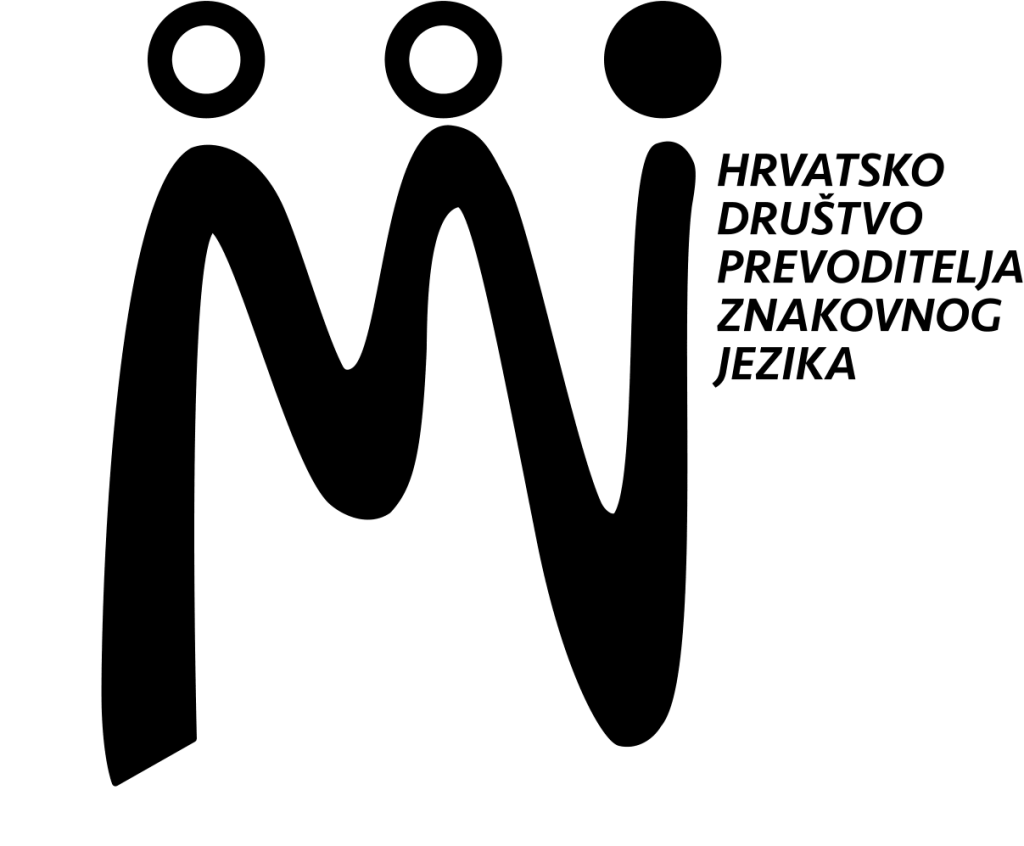
The primary challenges encountered in the development of this dictionary can be categorized into technical and linguistic domains, each demanding meticulous attention. Our paramount concern revolves around ensuring the exceptional quality of the material. Video content, a cornerstone of the educational aspect, necessitates high resolution to guarantee clarity. Every nuance — be it hand positions, movements, finger gestures, or facial expressions — must be distinctly visible, facilitating precise comprehension.
Given the digital nature of this online dictionary, which houses a substantial volume of top-tier video material, robust technical and server support is imperative. The overarching objective is educational efficacy, and seamless technical infrastructure is pivotal in achieving this goal.
As pioneers in crafting the first dictionary of this kind, we are dedicated to innovation within the realm of sign language. Drawing inspiration from analogous sign video dictionaries in other countries, we conduct thorough analyses, learning from their experiences, to ensure the development of an optimal product. Collaboration with a diverse array of experts, including linguists and web developers, is integral to this process. However, our most vital collaborators are the Deaf community members themselves. They serve as our primary fount of knowledge, offering invaluable insights that guide us in refining and perfecting our dictionary. This collaborative approach ensures that the end product not only meets but also exceeds the expectations of our diverse user base.
Could you describe the process of creating the dictionary and how it will be made accessible to the target audience? What is the scope of the dictionary in terms of the number of words, phrases, and sentences it aims to include?
Moja Prva Znakovnica is envisioned as a publicly accessible and free website, comprising a comprehensive collection of over 500 concepts, words, phrases, and sentences integral to everyday communication. This marks the initial phase of our endeavour, with future plans aimed at a continual expansion, ultimately encompassing several thousand terms. The design, akin to that of a conventional dictionary, incorporates a user-friendly search engine on the page. Users can input a term in the Croatian language, such as “house,” and with a simple click, access a video demonstration in Croatian Sign Language. Additionally, the platform provides links to related expressions and words, offering a holistic understanding of, for instance, phrases like “I want to go home” or “this is my home.”
Beyond the linguistic dimension, Moja Prva Znakovnica recognizes the importance of imparting a cultural context. Thus, alongside instructional videos on sign performance, users will find enriching information about the culture and world of the Deaf community. This holistic approach ensures that our users not only grasp the language intricacies but also gain insights into the vibrant cultural tapestry of the Deaf community. As we embark on this journey, our commitment remains unwavering, with continuous enhancements planned to make Moja Prva Znakovnica an invaluable and evolving resource.
Can you explain the role of the project team and their expertise in developing this dictionary?
In our compact team, we are fortunate to have Nives Gotovac, a child of Deaf parents with a master’s degree in sign language translation from the prestigious international program, EUMASLI. Joining her is Marija Šoić, who, having grown up in the Deaf community, brings a wealth of experience as an experienced interpreter of Croatian sign Language. Together, the three of us also form the Management Board of the Company, which has been actively engaged in its operations since its inception.
Our involvement extends beyond the organizational realm; it is deeply rooted in advocacy for equalizing the rights of the Deaf community in the Republic of Croatia. This commitment is not abstract for us; it stems from personal experiences, having navigated the obstacles faced by the Deaf within Croatia.
Moja Prva Znakovnica is just one facet of our multifaceted initiatives, where our focus is specifically directed towards the youngest members of the community. This realization dawned upon us through meaningful conversations with hearing parents of deaf children, who expressed concerns about effective communication with their own child.
Reflecting on my own childhood, I cherish those tender moments and conversations with my parents that were our secret, expressed through Croatian sign language. Those moments enriched my life and, most importantly, strengthened the bonds within my family. It is this sentiment that fuels our dedication to making such connections possible for all parents of deaf children who may not be familiar with sign language. We believe that fostering these connections not only enriches individual lives but also contributes to the unity and resilience of families.
Through the Bona Fides Invest platform, you launched a crowdfunding campaign for dictionary development. How can potential supporters contribute to the campaign, and what impact will their contributions have on the project’s success?
Undoubtedly, at this crucial juncture, securing financial support is paramount to bringing our project to fruition. So, everyone whom we touched their heart with our story can make a financial contribution via the Bona Fides Invest platform. However, we deeply value every form of support that comes our way. Those touched by our narrative have the power to bolster our cause through not only financial contributions but also by amplifying our message on social networks and sharing our posts.
We aspire to inspire everyone who encounters our project to extend its reach within their communities. Beyond the financial objective, our overarching goal is to disseminate information about sign language and the culture of the Deaf—knowledge that might be unfamiliar to many. By doing so, we aim to significantly contribute to the inclusion of a marginalized group.
Your support, in whatever form it may take, serves as a catalyst for fostering awareness and understanding. Together, we can create a ripple effect, reaching far and wide and making a meaningful impact on the lives of the Deaf community. We appreciate each gesture of support, recognizing that it is through collective efforts that we can truly make a difference.
What are the biggest problems faced by deaf people in Croatia, and how can we solve them?
At the forefront of the challenges faced by the Deaf community is a communication barrier, followed by a broader issue of general marginalization. Deaf individuals grapple with what is often referred to as an “invisible disability.” At first glance, there may be no apparent difference from their hearing counterparts. However, this invisible disability manifests in their relationship with language, specifically the challenge of not mastering spoken Croatian in the same way as their hearing peers. Extensive research underscores a lag in linguistic knowledge compared to their hearing counterparts.
For the Deaf, the visual experience is paramount for comprehension. Whether through written information or ideally presented via a sign language interpreter, visual communication becomes the key to accessing information. This highlights the necessity for a shift in societal perception and accommodation.
A poignant illustration of marginalization emerges in the realm of deaf athletes. Despite their remarkable success on the international stage, winning medals at world competitions, they often find themselves sidelined in media representation. Even the recognition of their achievements was a hard-fought battle, with Deaf Olympians historically facing disparities in acknowledgment compared to their counterparts in the regular Olympics or Paralympics.
Our mission seeks to dismantle these barriers by amplifying the visibility of the Deaf community’s potential. We advocate for language and culture, emphasizing the crucial role of highly qualified translators to facilitate early and comprehensive inclusion. By making Croatian Sign Language (HZJ) accessible to all, we aim to cultivate widespread interest in learning at least the basics. This approach enables individuals to initiate meaningful contact, demonstrating respect and appreciation for their Deaf fellow citizens.
True inclusion, in its most foundational form, begins at the individual level and radiates outward to society. Our goal is to foster genuine openness and interest in understanding the existence of HZJ and Deaf culture. By cultivating this understanding, we aim to spark a cascade effect, fostering inclusive attitudes from the very first encounter. This extends to hearing parents who, upon welcoming a deaf child into their family, embark on a journey of visual communication, reaching the child from the very first day.
Can you share some success stories or moments that highlight the positive impact your work has had on the Deaf community or individuals you’ve worked with?
One of the most impactful initiatives undertaken by our organization, the Croatian Association of Sign Language Interpreters, involved a collaboration with the Directorate of Civil Protection. In this project, we translated 13 brochures addressing natural and other disasters, directly contributing to the safety of our deaf fellow citizens. For the first time, it became apparent that information on life-critical topics must be accompanied by translations into Croatian Sign Language.
This groundbreaking project paved the way for a promotional video about the emergency number 112, featuring integrated translation into HZJ. This historic development is currently being broadcast on television, marking the first time in history that our deaf community receives direct information about crisis situations. Through our efforts, we’ve not only translated information but have also instigated tangible changes, enhancing the accessibility of crucial information and ensuring the safety of our deaf fellow citizens. This underscores our commitment to fostering inclusivity and making meaningful contributions to the well-being of the Deaf community.
How do you see the future of accessibility and inclusion for the Deaf community in Croatia? what role do projects like “Moja Prva Znakovnica” play in shaping that future?
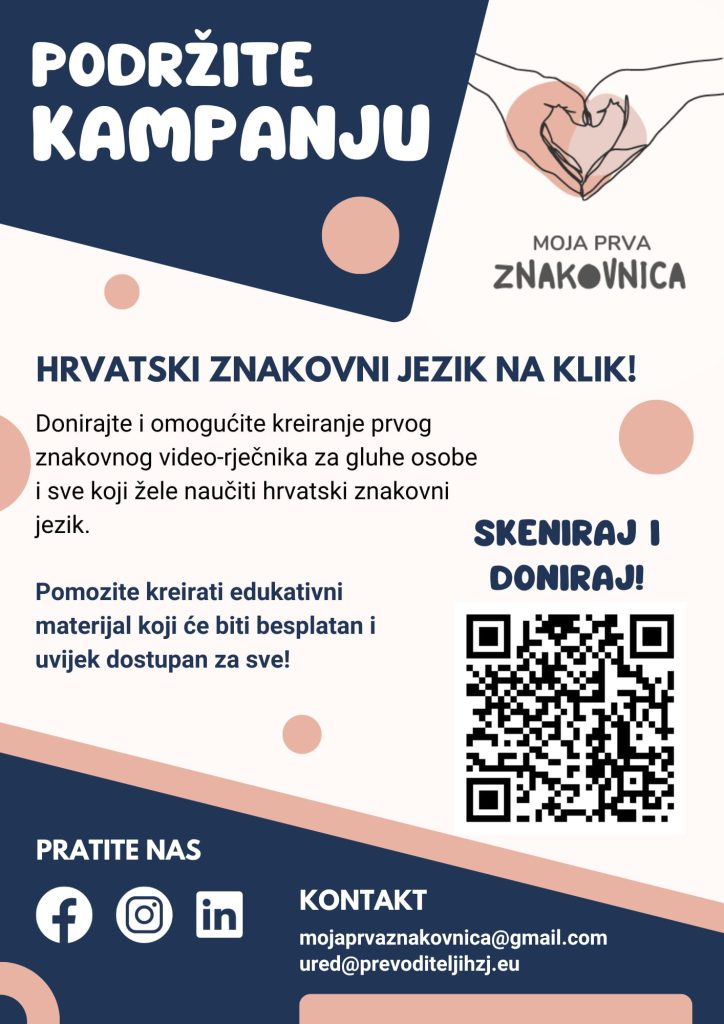
The field of expertise dedicated to the language and culture of the Deaf, along with the availability of sign language interpreters, remains limited. Currently, there is a shortage of professionals who can be assigned to every child in mainstream education who is entitled to an interpreter. Considering that there are approximately 14,000 to 16,000 deaf and hard-of-hearing individuals in the Republic of Croatia, the demand for these services is substantial. The Moja Prva Znakovnica project addresses these challenges head-on, shedding light on the pressing issues and proposing a solution: the broader availability of Croatian Sign Language (HZJ), as true inclusion is only achieved through it.
The implementation of the Moja Prva Znakovnica project aims to elevate awareness of these challenges and, more importantly, to provide a practical remedy: greater access to Croatian Sign Language. Recognizing that the Deaf community has a fundamental right to their own language, it is imperative that we fulfil this right by expanding access to HZJ. Central to this effort is the need for a larger pool of translators and interpreters, which in turn necessitates education in Croatian Sign Language and Deaf culture.
As HZJ gains wider prevalence, there is a simultaneous increase in individuals learning it out of genuine goodwill. This organic motivation not only contributes to a more significant presence of HZJ but also fosters a general atmosphere of greater acceptance towards the Deaf community. By addressing these fundamental needs, the Moja Prva Znakovnica project serves as a catalyst for positive change, promoting inclusivity and understanding within society.

